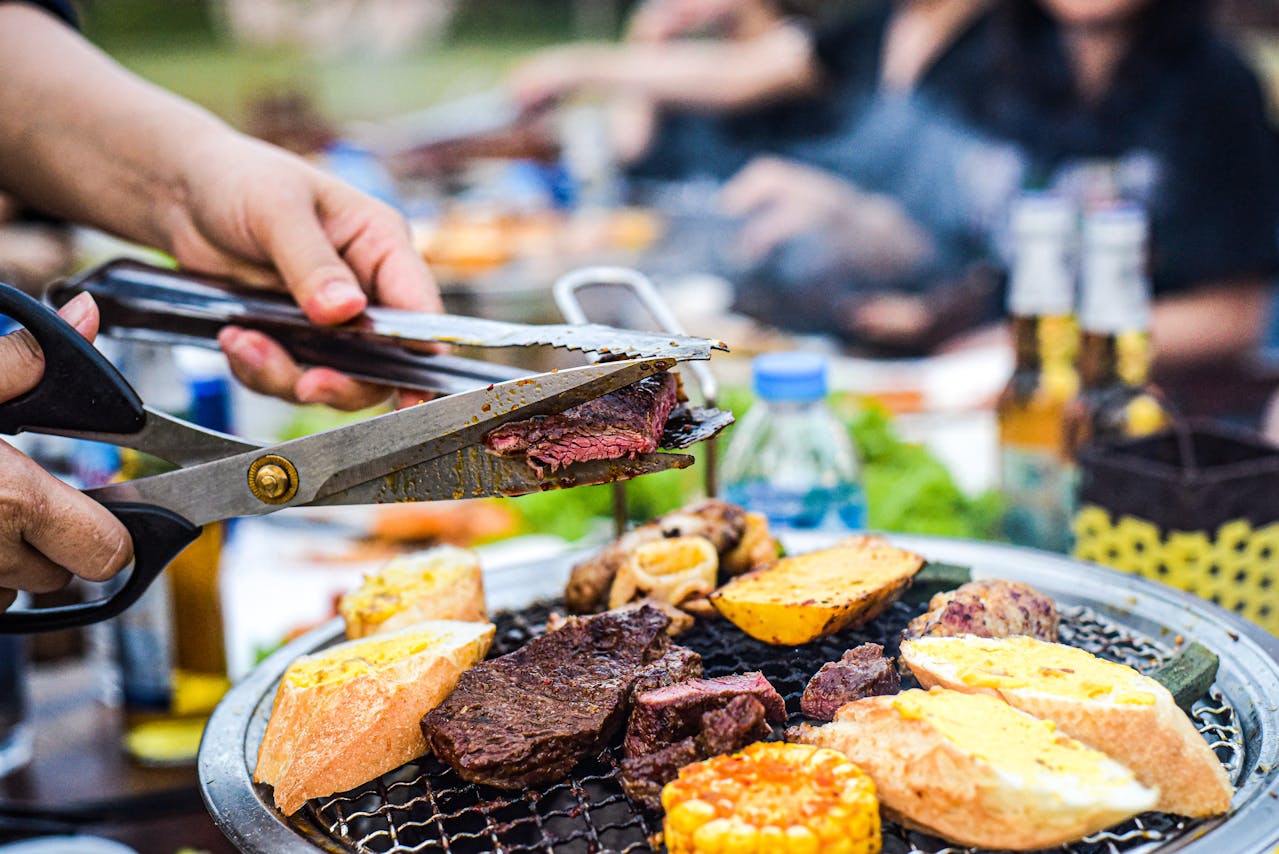Fire, Flavor, and the Human Story
Before microwaves, air fryers, and Instagram food reels, there was fire. Just fire – and a hungry human staring at it, wondering what would happen if a chunk of meat hit those flames. Spoiler alert: dinner happened, and so did history.
The history of grilling and BBQ is really the story of how humans learned to turn survival into flavor. Every time we spark up a grill, we’re repeating one of the oldest rituals on earth – cooking over open flame.
It’s primal, it’s social, and it’s the reason backyard smoke still pulls neighbors over like moths to a porch light.
But let’s clear one thing up before diving into the smoke:
Grilling is quick cooking over high heat. Barbecue, on the other hand, is low and slow – meat whispering to smoke for hours until it falls apart in submission. They’re cousins, not twins, and both have traveled a long way from their cavefire roots.
Origins: When Humans First Tamed Fire
Picture it: about a million years ago, early humans huddled around a flickering flame. No tongs, no rubs, no secret sauces – just curiosity and maybe a woolly mammoth steak on a stick.
Archaeologists say Homo erectus was likely the first to cook with fire, turning tough raw meat into something chewable and, well, delicious.
Once we discovered that heat made food tastier (and less deadly), there was no going back. Fire turned dinner into an event. It drew people together.
The first community cookout wasn’t planned – it just happened when folks realized that warmth, light, and roasted food made the dark a lot less scary.
Across the continents, ancient cooks started experimenting. In Africa, early smoking pits kept meat edible for longer – think of it as the first food preservation system. In Asia, they shaped clay into primitive ovens, precursors to tandoors and kamados.
In the Americas, native peoples cooked over wood and stone, digging pits and letting smoke do the magic.
Fire didn’t just feed us; it civilized us.
It taught patience, skill, and the art of making something greater than the sum of its ingredients: smoke + time + meat = happiness.
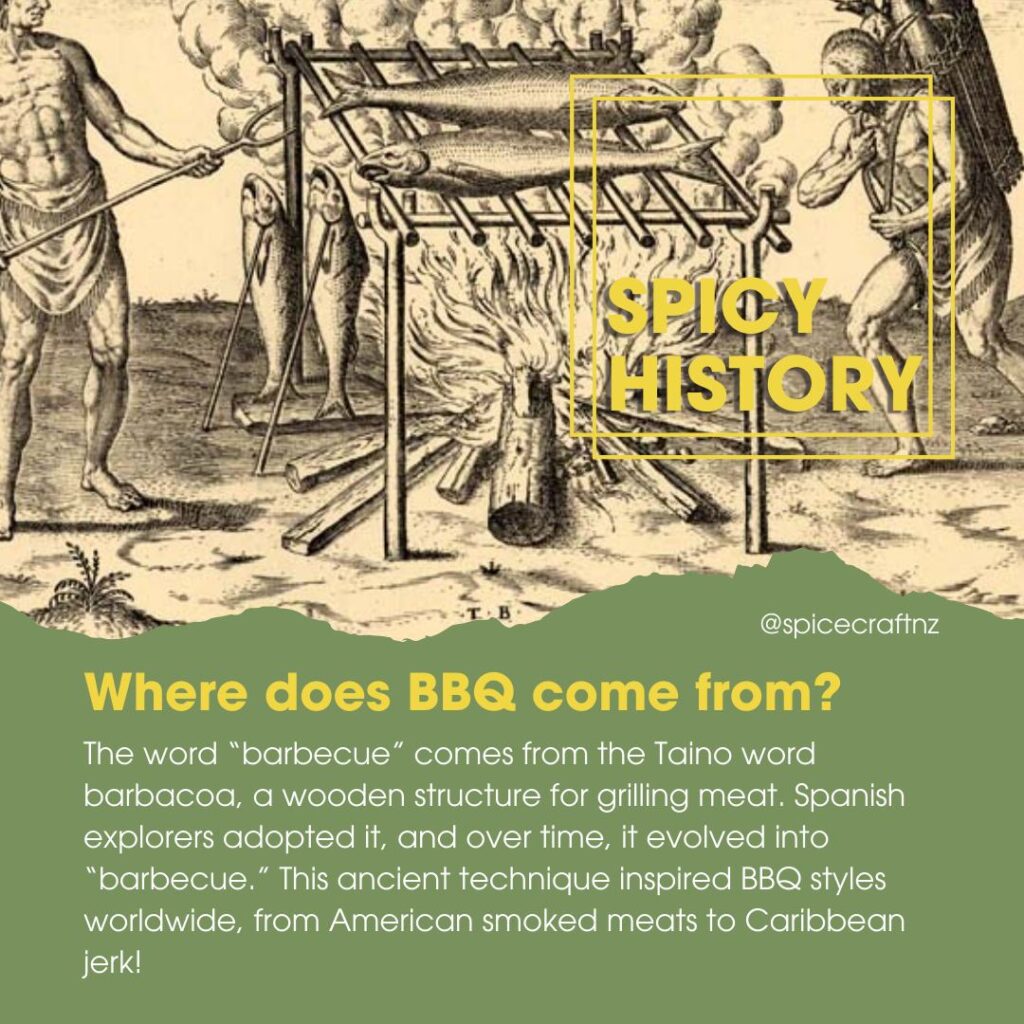
Ancient Civilizations and the Birth of Grilling
Fast-forward a few millennia and people were no longer just cooking to survive – they were grilling for glory.
The ancient Egyptians roasted ducks and oxen on metal skewers, seasoning them with early spice blends.
The Greeks turned grilling into theatre – whole lambs rotating over coals while philosophers debated in the shade.
The Romans, ever the engineers, built portable braziers so soldiers could grill on the go. Priorities, right?
In Asia, clay ovens like the Indian tandoor and Chinese han-lu ovens were masterpieces of heat control, turning flatbread and meat into smoky perfection. The Japanese hibachi came later but carried the same idea – simple, focused fire that celebrated balance and craftsmanship.
Across these cultures, flame meant celebration. Religious sacrifices often ended with roasted feasts, proof that grilling had become ritual, not just utility. People gathered, talked, sang, and, most importantly, ate together.
Somewhere along that smoky timeline, humans learned the secret: flavor lives in the flame.
The New World and Indigenous Barbecue Traditions
The next big spark in the history of grilling and BBQ came when explorers crossed the Atlantic. When the Spanish arrived in the Caribbean in the late 1400s, they found the Taíno people cooking meat on raised wooden frames over slow fires.
They called this setup barbacoa – and that word would eventually become barbecue.
The Taíno weren’t just grilling for fun; they were preserving meat with smoke, keeping it edible in the tropical heat. Their method used green wood to create cool smoke and gentle heat – a primitive but genius slow cooker.
When Europeans saw it, they were hooked. Soon, barbacoa methods spread through the Caribbean and into the Americas, adapting to whatever meat and wood were available.
Native American tribes in the Southeast practiced pit cooking – burying meat in coals, covering it with earth, and letting it cook low and slow overnight.
That technique echoed the barbacoa style and would influence settlers who adopted and modified it with their own spices and tools.
Fun fact: The word barbecue didn’t just describe the cooking method – it sometimes described the whole event. A “barbecue” was the gathering itself, long before it meant the ribs on your plate.
By the 1600s, barbecue had officially arrived in the American colonies, ready to evolve into something uniquely its own.
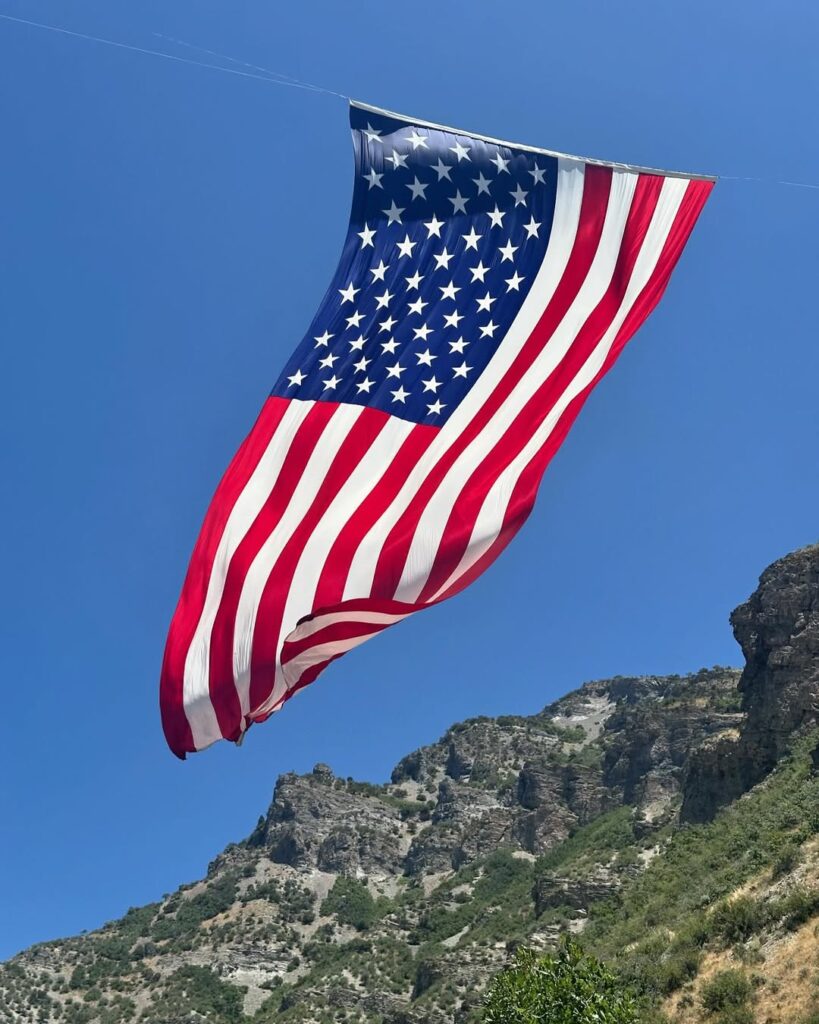
The Rise of Barbecue in America
If fire was humanity’s first invention, American barbecue was its great remix. In the colonial South, settlers brought European roasting techniques and met Indigenous and African traditions of pit smoking. What emerged was not just a cooking style – it was a culture.
BBQ as a Social and Political Affair
By the 1700s, barbecue had become the ultimate social glue. Politicians threw BBQ feasts to win votes; churches hosted them to raise funds; neighbors used them to catch up on gossip and swap sauce secrets.
Imagine an event where politics, prayer, and pulled pork all shared the same table – that was early America.
When enslaved Africans were forced into plantation kitchens, they carried with them generations of cooking knowledge: spice blending, smoke control, flavor layering. Those skills became the backbone of Southern barbecue traditions. It’s impossible to talk about BBQ’s history without honoring that legacy.
Regional Styles Were Born:
- Carolina Barbecue: whole hog, slow-smoked over hardwood, finished with tangy vinegar sauce.
- Texas Barbecue: beef-driven, bold rubs, post oak smoke – brisket country.
- Memphis Barbecue: ribs, dry rubs, a touch of sweetness.
- Kansas City Barbecue: everything from burnt ends to saucy ribs – melting-pot perfection.
Each region told a different story, written in smoke. And just like jazz or blues, BBQ became a uniquely American art form – improvised, soulful, and deeply regional.
The Sauce Revolution
For centuries, smoke and salt were enough. But humans being humans, somebody eventually said, “What if we pour something on it?” Thus began the age of barbecue sauce.
Vinegar ruled the Carolinas; mustard took over South Carolina; tomato and molasses reigned in Kansas City. Sauce wasn’t just flavor – it was identity. Pitmasters guarded recipes like state secrets, each drop telling a story of migration, trade, and creativity.
And while people argue endlessly over whose sauce reigns supreme, every bottle on the shelf today owes a debt to those early pioneers who learned how to balance sweet, tangy, and smoky in one glorious brushstroke.
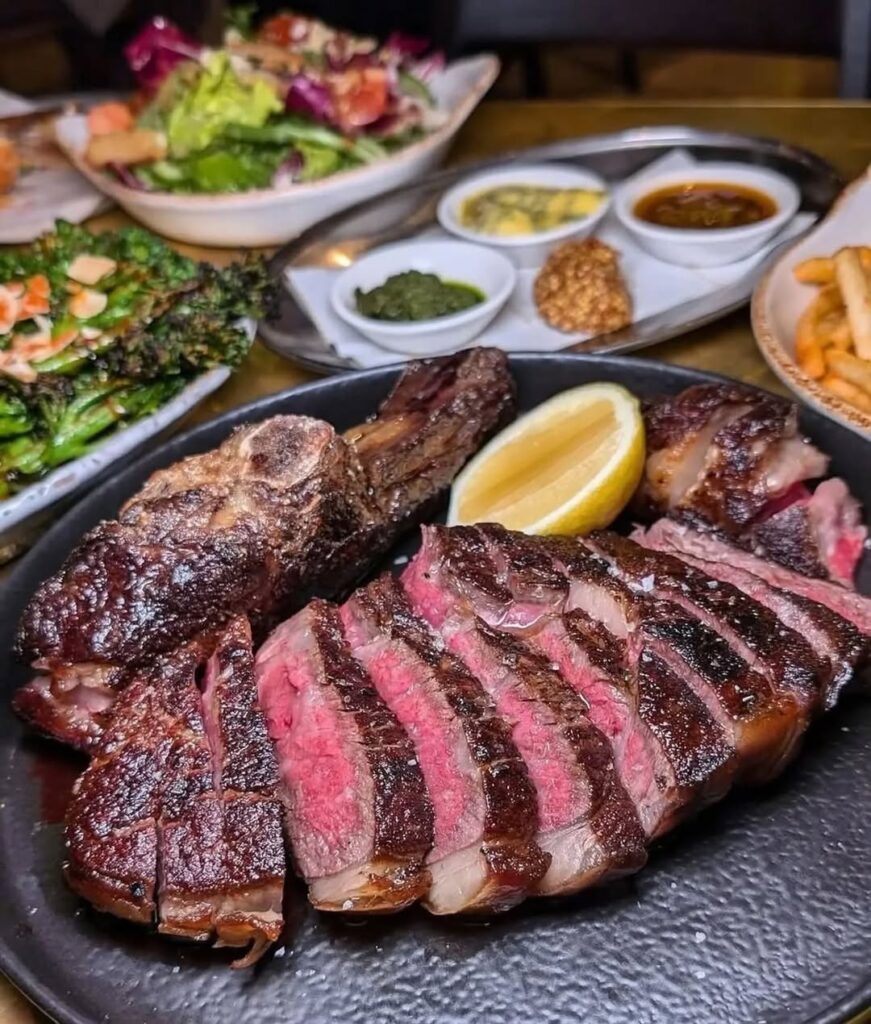
Smoke, Labor, and Legacy
Let’s be honest – traditional BBQ isn’t quick or easy. It’s labor-intensive, sweaty, and slow. That’s what makes it magic. In the antebellum South, enslaved pitmasters tended open pits for days during community feasts.
Their patience, technique, and instinct built the foundations of modern barbecue. Their influence still flavors every rack of ribs and every pulled-pork sandwich served today.
When emancipation came, many of those same cooks started their own smokehouses, passing their craft down through generations. BBQ became both survival and celebration – a way to claim pride, share culture, and make something beautiful out of fire and hard work.
“Smoke remembers,” pitmasters like to say. It carries the past with every curl.
The Backyard Revolution
After World War II, America got suburban. And with those shiny new lawns came shiny new grills. Backyard barbecue became the weekend ritual of middle-class dreams. No need for a pit – just a Weber kettle and a bag of charcoal.
Invented in 1952 by George Stephen Sr., the Weber changed everything. Suddenly, anyone could grill at home without digging holes or babysitting coals all night.
Outdoor cooking turned from necessity to leisure. The smell of charcoal meant summer, family, and maybe an overcooked burger or two.
Magazines sold the dream. Ads showed dads in aprons, moms bringing lemonade, and kids waiting for hot dogs – barbecue as lifestyle. It was no longer about survival or ceremony; it was about togetherness and pride in your backyard.
Grilling Around the World: Global Cousins of Barbecue
If there’s one universal truth, it’s this: wherever there’s fire, someone’s throwing meat on it.
The history of grilling and BBQ isn’t just an American tale – it’s global.
Every culture that learned to cook with flame built its own version of barbecue, shaped by local ingredients, religion, and climate.
Let’s take a little world tour – no passport needed, just a strong appetite.
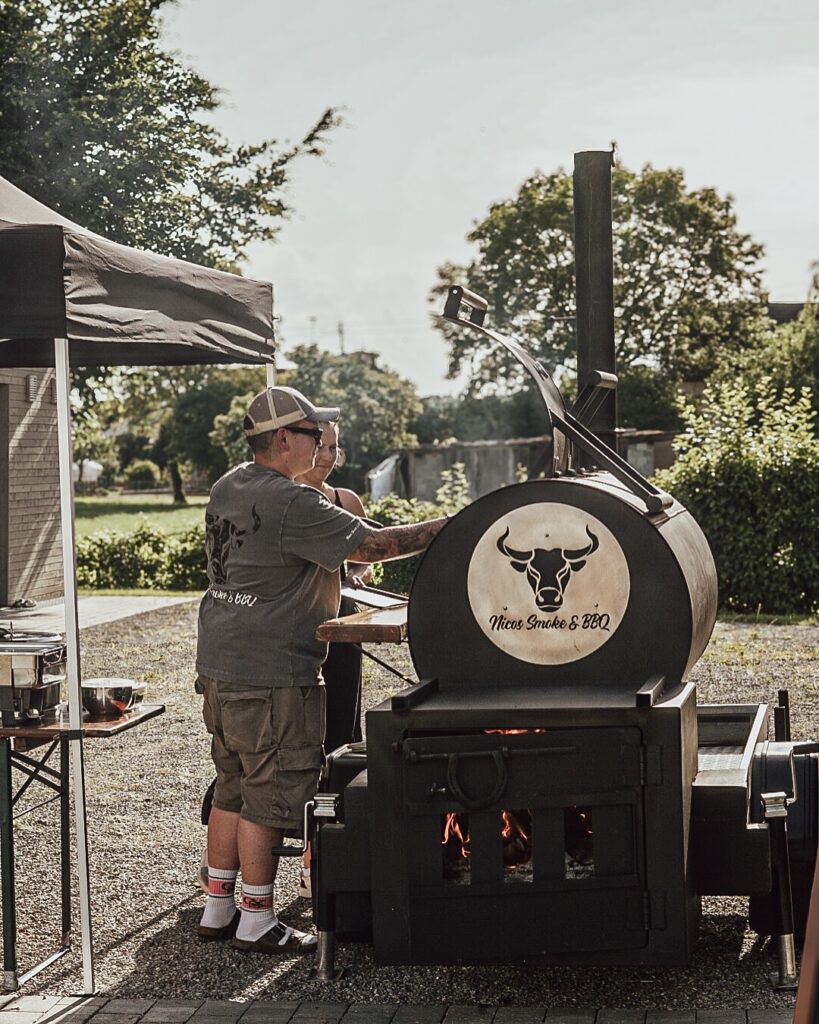
Argentina: The Asado Religion
Down in Argentina, asado is less a meal and more a way of life. Picture sprawling pampas, gauchos tending open fires, and slabs of beef cooking slowly on iron crosses beside the flames.
Argentine asado isn’t rushed. It’s about patience, respect for meat, and fellowship. Families gather every weekend, the air thick with conversation and wood smoke. The pitmaster – or asador—is practically a priest, watching over the meat like it’s sacred scripture.
If American BBQ is blues, asado is tango – smoky, graceful, and deeply soulful.
Japan: The Art of Precision Flame
Across the ocean, Japan took grilling to the opposite extreme: small, focused, and deliberate. Yakitori and yakiniku aren’t about whole animals or 12-hour cooks. They’re about balance – each skewer or slice kissed by flame just enough to coax out purity of flavor.
The Japanese treat fire with respect, using special binchōtan charcoal that burns hot and clean. It’s grilling as meditation.
Whereas Americans might say, “Low and slow,” the Japanese philosophy might be: “Hot, fast, and flawless.”
Korea: Fire Meets Fermentation
Walk into a Korean BBQ joint and you’ll smell joy before you see it. Here, grilling happens right at the table – short ribs (galbi), pork belly (samgyeopsal), and marinated beef (bulgogi) sizzling on small charcoal or gas grills.
But the real magic is in the pairing: grilled meat meets fermented sides like kimchi and spicy sauces. It’s balance again – heat, acid, smoke, and funk.
Korean BBQ is a social sport. You cook together, you laugh, you build lettuce wraps like edible trophies. It’s participatory grilling – the kind that turns strangers into friends before the coals go out.
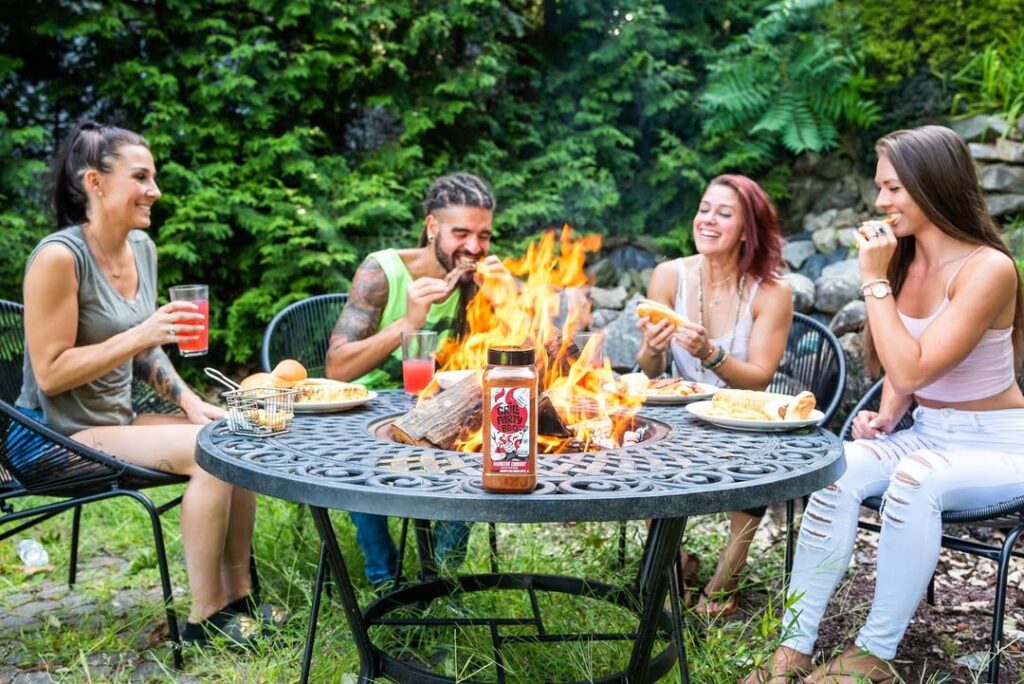
The Middle East and the African Continent
In the Middle East, fire takes the form of kebabs – skewered lamb or chicken marinated in spices, grilled over open coals, and served with bread or rice. It’s one of the world’s oldest grilling traditions, stretching back to ancient Persia and beyond.
In South Africa, the national pastime is the braai – a cookout that’s part feast, part ceremony. There’s even National Braai Day. Like American BBQ, it’s about unity. Everyone brings something, everyone stays until the embers fade.
The tools and flavors differ, but the message is the same everywhere:
Fire equals community.
The 20th Century: From Backyard to Mainstream
By mid-century, grilling wasn’t just a hobby – it was a status symbol. The 1950s gave us the suburban dream and with it, a shiny grill in every yard. What used to be a rustic tradition was suddenly chrome-plated and catalog-ready.
The Weber Revolution
In 1952, George Stephen Sr. welded a steel buoy into a rounded grill with a lid. The Weber kettle was born, and with it, the modern grilling movement. It controlled airflow, retained heat, and looked good doing it.
Now anyone could barbecue – no pit required, no secret family method needed. Just a backyard, a beer, and a lighter.
That little black dome democratized grilling and turned it into an American ritual.
Charcoal, Gas, and the Great Debate
As the decades rolled on, new technologies arrived to “make grilling easier.” Enter gas grills – fast, clean, and controllable. Purists scoffed. They said, “You can’t spell smoke without wood.” But convenience is hard to beat.
Then came electric grills, pellet smokers, and infrared burners. Each innovation sparked the same age-old question:
“Does it still count as BBQ if there’s no real fire?”
Short answer: maybe not. Long answer: depends who’s cooking.
At the end of the day, whether you’re burning logs or pressing a button, the soul of barbecue is the same – it’s about connection. You cook for people you care about, you feed them, and you share stories around the flame.
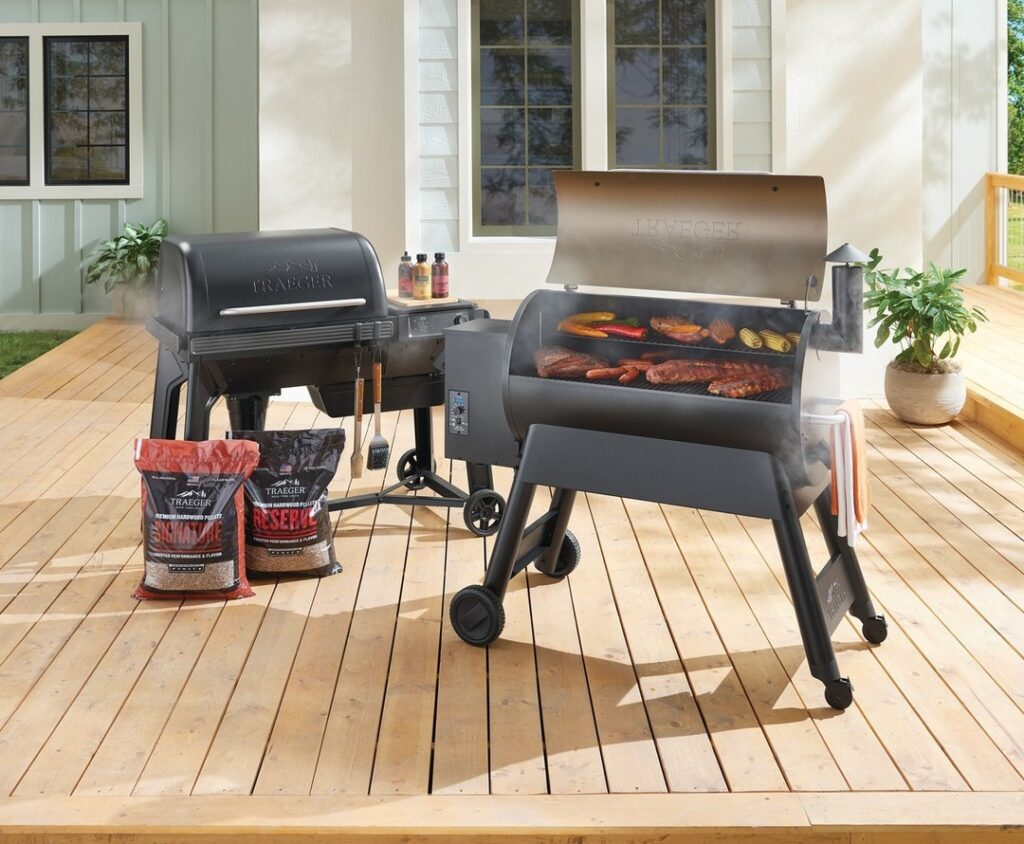
Competition BBQ and the Birth of the Pitmaster Celebrity
In the late 20th century, barbecue started showing up on TV and at national competitions. What began as friendly local showdowns turned into full-on sport.
Kansas City’s American Royal, Memphis in May, Texas BBQ Showdowns – these events crowned new kings of smoke every year. Pitmasters became rockstars, complete with fans, merch, and sponsorships.
Shows like BBQ Pitmasters turned backyard legends into household names. Suddenly, everyone wanted a smoker, a secret rub, and bragging rights.
The competition scene also refined techniques. Precision temperature control, wood pairings (hickory, mesquite, apple, oak), and meat science turned BBQ from backyard art to culinary craft.
“We don’t just cook meat,” as one champion put it. “We tell stories through smoke.”
The Modern BBQ Revolution
Today, barbecue has gone global, digital, and a little bit nerdy. And honestly? That’s not a bad thing.
The Craft BBQ Movement
Across America, the new generation of pitmasters treats barbecue like fine dining. They source heritage meats, experiment with smoke profiles, and obsess over texture.
It’s farm-to-smoker, not just farm-to-table.
Texas joints like Franklin Barbecue turned the humble brisket into legend, while smaller operations brought back old-school pit techniques with modern flair. People line up for hours – not because they’re hungry, but because they want to taste craftsmanship.
Craft BBQ is where nostalgia meets precision. You’ve still got fire and wood, but now there’s thermometers, analytics, and flavor data. It’s science with soul.
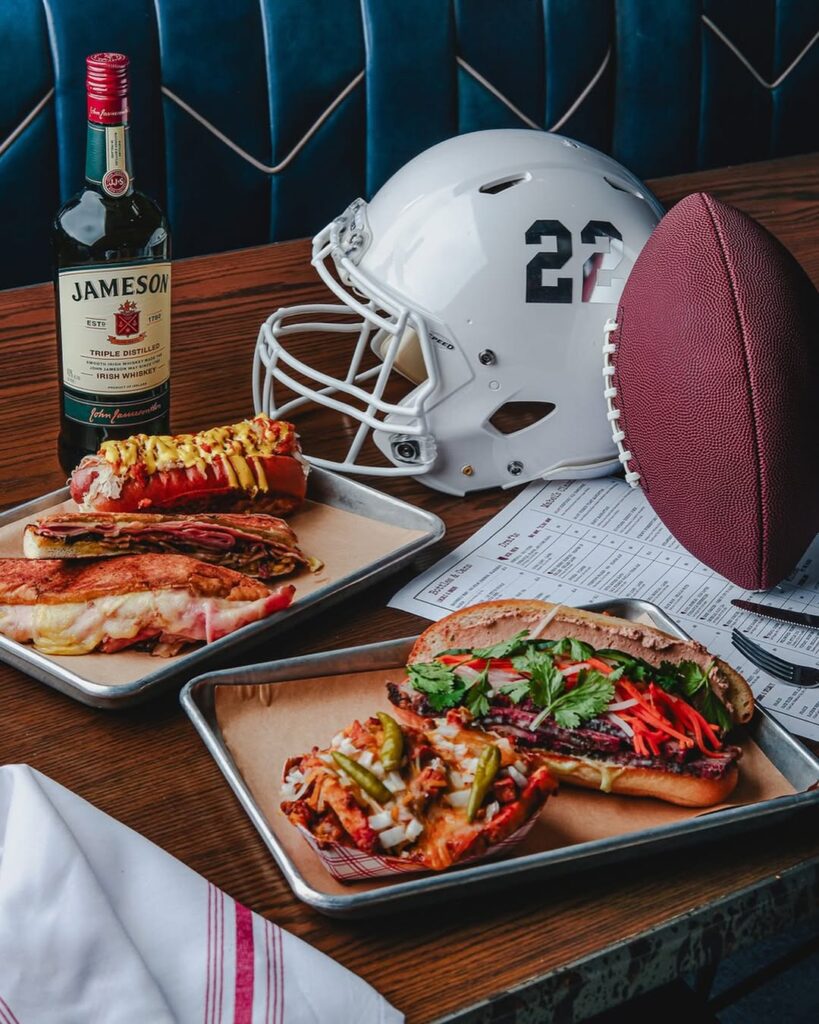
The Fusion Era
The world’s flavor map keeps expanding, and BBQ is following suit. Korean BBQ tacos. Jamaican jerk brisket. Smoked tofu satay.
Fusion isn’t selling out – it’s leveling up.
The new pitmasters aren’t bound by region or tradition. They respect the past but don’t live in it. Smoke is their medium, and creativity is their fuel.
You’ll see brisket glazed with gochujang, ribs finished with tamarind, or smoked vegetables treated with the same reverence as prime rib. It’s not “meat-only” anymore – it’s smoke cuisine.
Tech Meets Tradition
We’ve officially entered the smart smoker era. Wi-Fi thermometers, app-controlled pellet grills, temperature probes that text your phone – it’s BBQ meets Silicon Valley.
And sure, old-school pitmasters roll their eyes, but technology isn’t killing the craft. It’s enhancing it. You can now hold 225°F for 12 hours without babysitting coals, giving you more time to actually enjoy the party.
Even so, the heart of it all hasn’t changed. Whether it’s a $50 grill or a $5,000 smoker, success still depends on the same three rules:
- Respect the fire.
- Trust your senses.
- Feed people with love.
Sustainability and the Plant-Based Pit
One of the newest – and most surprising – chapters in the history of grilling and BBQ is the rise of plant-based options. Once upon a time, suggesting veggies on the grill would’ve earned you a raised eyebrow.
Now, smoked mushrooms, jackfruit “pulled pork,” and grilled tofu are showing up at BBQ joints everywhere.
It’s not about replacing meat; it’s about expanding the conversation. Smoke makes almost anything taste incredible. And honestly, if you can coax magic out of an eggplant, you’ve earned your pitmaster badge.
The future of BBQ looks a lot more inclusive – and that’s a good thing.
What Fire Still Teaches Us
So here we are – millions of years after the first spark, billions of cookouts later, and humans are still chasing that same primal satisfaction: food + flame + company.
The history of grilling and BBQ is really the story of us. Of trial and error. Of smoke in our eyes and joy in our bellies.
Every time you light a grill, you’re part of that story – continuing a line that stretches from prehistoric caves to backyard patios.
Fire taught us patience. Smoke taught us craft. And barbecue taught us generosity.
Because at the end of the day, BBQ isn’t just food. It’s connection. It’s storytelling. It’s culture made edible.
So the next time you flip a burger, baste ribs, or check the bark on your brisket, remember: you’re not just cooking dinner – you’re keeping history alive.
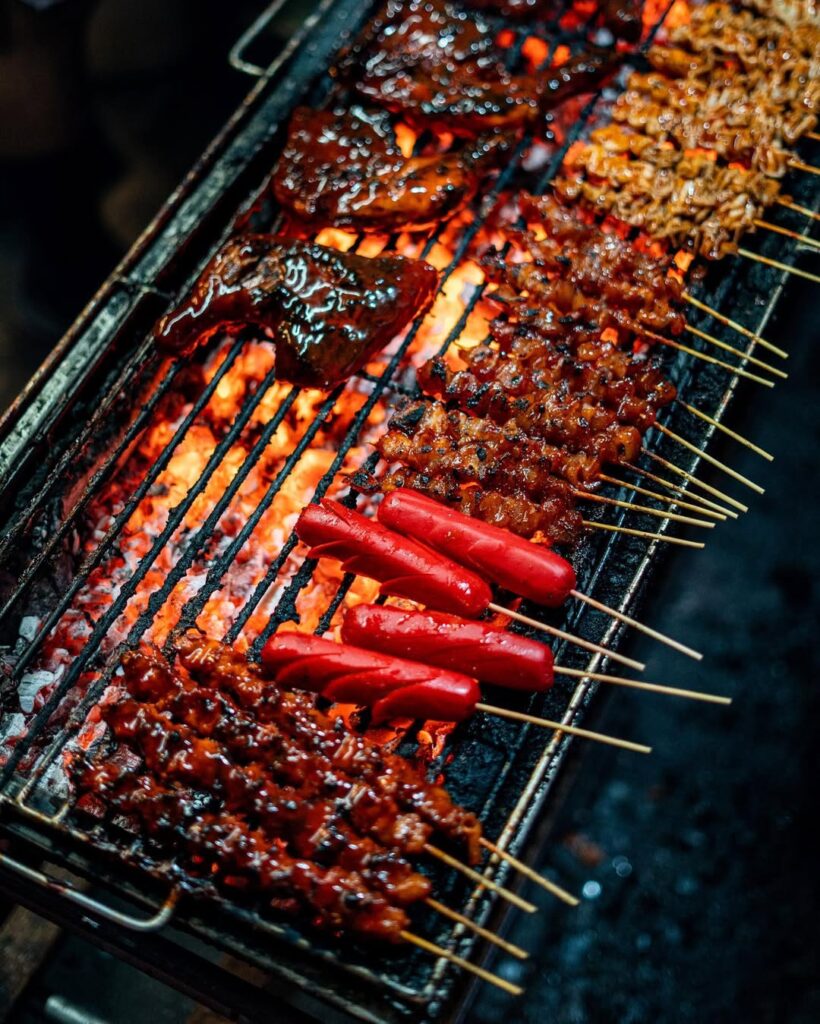
Quick Recap for Hungry Minds
- Grilling started as survival cooking for early humans – fire made food safe and tasty.
- Ancient civilizations turned flame into ritual and art.
- Barbecue’s roots trace to the Caribbean’s barbacoa and Indigenous pit cooking.
- America’s regional styles grew from a blend of African, Native, and European techniques.
- Modern BBQ culture evolved from backyard cookouts to global gourmet innovation.
- The fire still burns, adapting with tech, taste, and time.
Grilling and BBQ in a Nut Shell
Every plume of smoke carries a memory. Every crackle of flame tells a story.
And every bite of barbecue reminds us that no matter how advanced we get, the best meals will always start with fire.
So grab your tongs, mind your coals, and pass the sauce – it’s been one heck of a ride.
Featured image credit: Thị Minh Nghi

